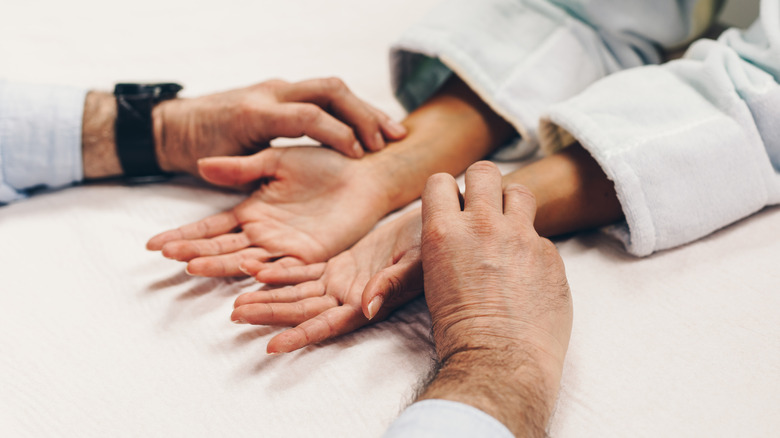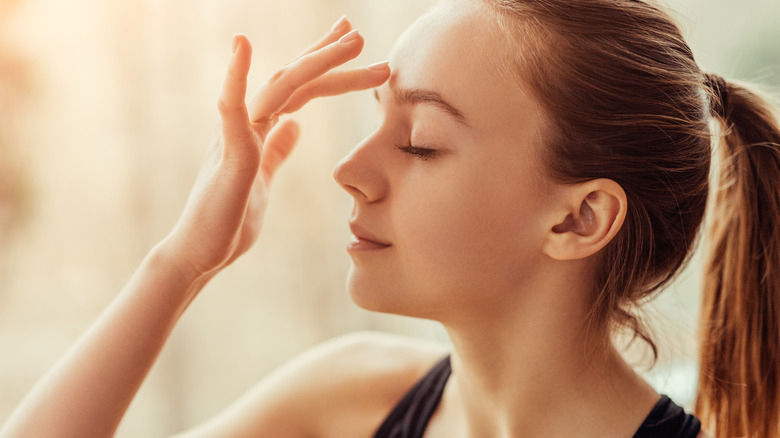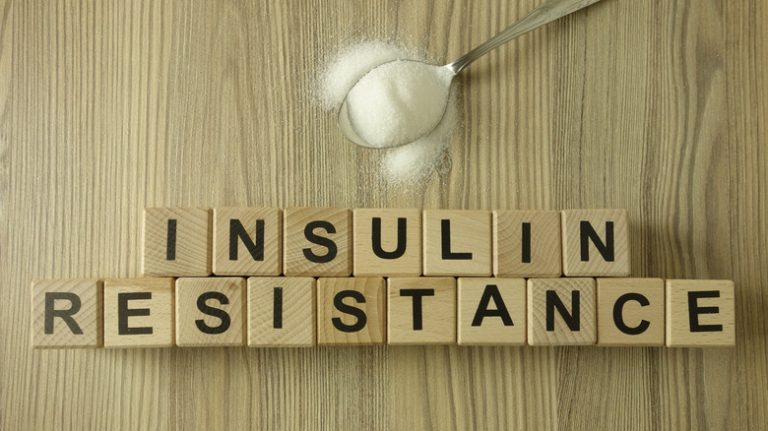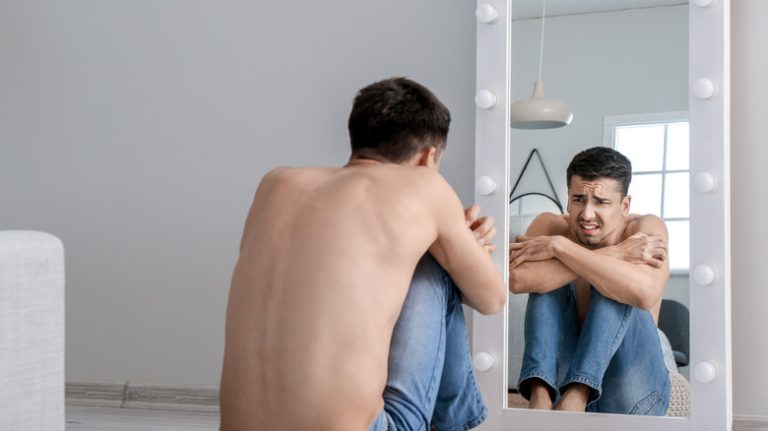Whether you’re waiting for a medical test result or working hard to meet a work deadline, it’s natural to feel some stress-related anxiety. Although stress can keep you focused and alert, anxiety can make you feel nauseated, restless, or dizzy. You might also feel your heart racing, your breath quickening, your body sweating, or you might also have trouble sleeping at night.
Some people might experience anxiety even when they aren’t in a stressful situation. Anxiety disorders can significantly interfere with daily life without treatment. Treatments typically include working with a therapist, taking medication, or finding support groups. You might also find anxiety relief from alternative therapies such as meditation, relaxing exercises like yoga, or a healthy diet (via Healthline). Yet, in a pinch, wherever you might be right now, you have an anxiety-relieving tool you can take with you anywhere — your thumb. Acupressure might help release some of your anxiety if you hit the appropriate acupoints.
How acupressure for anxiety works

Traditional Chinese Medicine takes a holistic approach to health, looking at how the energy — called “qi” — flows through the body, according to East Village Acupuncture & Massage. Acupuncture and acupressure practitioners locate areas where this qi might be blocked and use these methods to release the blockages. Although acupuncture involves inserting needles into specific points along these major meridians, acupressure uses your thumb or index finger to stimulate these pressure points. Traditional Chinese medicine believes that your major organs correspond with your overall health. For example, the Lung meridian corresponds with grief; so, if it is healthy and in balance, you’re better able to handle and process grief. An unbalanced Lung meridian could have you holding onto grief longer.
The Yin Tang point sits between your eyebrows, which is often called the “third eye” in the yoga tradition. Rub this area in a circular motion with your thumb with your other fingers pointing upward. This point can alleviate stress and anxiety. You can find the Shen Men (also called “Heart 7” or “Spirit Gate”) at the base of the inside of your wrist crease, below the space between your ring and pinky finger (via Fred Hutch Cancer Center). Shen Men can work for anxiety-related insomnia or if you find yourself waking up anxious in the middle of the night. As part of the Heart meridian, it calms both the heart and anxiety (via York Chiropractic and Oriental Medicine).
Acupressure can supplement other anxiety remedies

According to a 2024 review in the Journal of Integrative and Complementary Medicine, acupressure can help reduce anxiety, especially with clinical or preoperative patients. A 2024 article in Acupuncture in Medicine also found that acupressure can relieve pre-surgical or pre-treatment anxiety. Many of the studies in this review used the Yin Tang or Shen Men acupoints to reduce anxiety. Acupressure might also improve sleep quality, according to a 2024 article in Sleep Medicine Reviews. Many of these studies used the Shen Men acupoints to reduce the time it takes to get to sleep and increase sleep time.
Acupuncture and acupressure shouldn’t be used alone to treat mental health conditions. Instead, these alternative remedies can be used as part of a mental health plan. In other words, if your doctor has prescribed medication, don’t stop taking this medication without a doctor’s consent. However, acupressure and acupuncture can further your current treatment plan (via East Village Acupuncture & Massage). Acupressure works best when you take some time to relax and pay attention to deep breathing. Once you identify a specific acupoint, massage in a circular motion, gradually increasing the pressure. One to two minutes a few times a day should suffice, but avoid pressing into an acupoint for more than 10 minutes.








